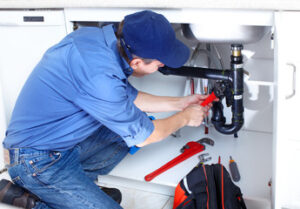When pipes leak, it can cause damage that requires expensive repair and replacement. Regular maintenance can help prevent problems.

Plumber Westminster does much more than unclog toilets and fix sinks. They design piping systems that disperse water, remove waste, and connect heating and cooling systems. They also inspect plumbing fixtures and pipes for damage and leaks.
A plumbing inspection involves a close examination of all the pipes and fixtures within your home. This includes the water heater, kitchen and bathroom sinks, dishwasher, washing machine, toilets, and any other water-using appliances. In addition, plumbers inspect the drain lines and sewer systems for any leaks or blockages. This is especially important for older homes with aging pipes. Leaks and blocked drains can cause serious damage to your property if left untreated. In some cases, a simple leak or blocked drain can even lead to flooding in your home. These issues are easy to ignore when they occur intermittently, but a regular plumbing inspection can catch them before they become major problems.
Besides being costly, a faulty plumbing system can also pose health and safety risks for your family. Hidden leaks can result in mold growth that affects indoor air quality and triggers respiratory problems. Additionally, if the leaks are located near electrical fixtures, they can create a fire hazard. A professional plumbing inspection can identify these risks and take the necessary steps to correct them.
Plumbing inspections can also save you money on your utility bills. Leaky faucets, toilets, and pipes waste gallons of water every day. A plumber can repair these leaks and improve your home’s water efficiency, saving you money on your monthly bills.
In addition, a regular plumbing inspection can help you extend the life of your pipes and fixtures. By identifying any parts that are approaching their lifespan, you can have them replaced before they break down completely, which saves you money on repair costs and replacement expenses.
If you’re thinking of buying a new home, it’s essential to have the plumbing inspected before making the purchase. An inexperienced homeowner may not notice any issues with the plumbing, but a professional plumber can spot problems before they escalate into expensive repairs.
A plumbing inspection can be performed in conjunction with a home inspection or on its own. A typical plumbing inspection will include testing for water pressure, checking the location of leaks, evaluating fixture condition and functionality, and testing the sewer line for any signs of clogs or backflow. The plumber will also check the drainage system for any clogs or issues with the sump pump. In some instances, a plumber may also use video inspections to examine hard-to-reach areas of the plumbing system, such as under sinks and in the basement.
Water Pressure Testing
Water pressure testing is the process of evaluating the integrity and functionality of your home plumbing drain lines. By applying a controlled amount of water pressure to the drain lines, plumbers can determine if there are leaks, what size the leak is, and even locate its exact location within the pipe.
To perform a water line pressure test, plumbers first shut off all faucets and water-using appliances in your home (this includes your washing machine and even your ice maker). Then the plumber connects a pressure gauge to an outdoor spigot or to a convenient location where it can be easily monitored (like inside of a garage or basement). Then the tester gradually increases the pressure by turning on the water supply and monitoring the pressure with the gauge. Once the plumber reaches the desired test pressure, they will turn off the water supply and monitor the pressure for about 2 hours.
The plumber will be looking for any drops in the water pressure which can indicate a leak. A drop in water pressure can also be a sign that the plumbing drain lines are overloaded and that there may be a large amount of debris blocking the flow of water. The plumber can then locate the blockage, diagnose a potential issue and perform any necessary plumbing drain line repair or replacement.
Another use for water pressure testing is to evaluate the permeability of soil or rock formations prior to conducting any type of ground modification program. The plumber will insert the test pipe into the ground and then slowly increase the pressure while watching for a sudden drop in pressure that indicates air has entered the leak. This can help the plumber know if a leak is located in the existing pipes or if they will need to dig to find the problem.
Hydrostatic plumbing tests are a crucial part of maintaining your plumbing system, especially in areas with expansive clay soils that can cause foundation and plumbing problems. By having a professional conduct these inspections, homeowners and business owners can reduce the risk of leaks and other issues in their drain and plumbing lines and avoid costly repairs down the road.
Water Flow Rate Testing
As the weather gets hotter, well water pumping speeds increase, and a higher flow rate can strain the system and lead to pressure issues in your home. Having your water flow tested by a professional can help you determine the optimal water pressure for your household needs, ensuring that there is always enough pressure to power your appliances and meet your household’s demands.
Consistent Water Supply
A lower water flow rate can lead to a shortage of water at critical times, such as during showers or halfway through washing the dishes. This can be frustrating and inconvenient, not to mention a significant drain on your household’s energy bills. A routine well flow test can ensure that your household’s daily water demand is met, preventing any unnecessary hassle or stress.
Low water flow rates can also be caused by a blockage or build-up in your pipes. Mineral deposits and debris can accumulate over time, restricting the flow of water through your pipes, causing poor water pressure. Having your pipes cleaned or descaled on a regular basis can prevent these problems from developing and improve your household’s water flow.
If you are considering purchasing a home with a private well, having a well flow test done can help ensure that your household’s water needs will be met by the well’s capabilities and design. A professional can evaluate your household’s average water consumption and design your well to produce an adequate number of gallons per minute.
Testing the well’s flow rate is important for residential homeowners that use a private water well for their home’s plumbing systems. A well flow test can help determine if the current well system is able to keep up with a homeowner’s water usage demands, and whether any adjustments or repairs need to be made to the well pump and water distribution system.
Performing a well flow test is simple, but requires some knowledge of how to do it and the correct equipment. The first step in a well flow test is to take a static pressure reading at the static/residual hydrant. This pressure must be a minimum of 10% lower than the reading taken at the flow hydrant. The next step is to open the hydrant and run a full well flow test. When the well flow test is complete, close the hydrant slowly.
Drainage and Venting Inspection
Plumbing inspectors assess the condition of water and waste pipes, fixtures like sinks, toilets and bathtubs, and appliances like dishwashers and water heaters. They look for leaks, signs of corrosion and other problems. They also check for proper installation and code compliance. Plumbers collaborate with other professionals such as construction teams and architects to ensure plumbing is seamlessly integrated into building projects and meets all required standards and regulations.
Pipes are usually hidden from view, running through walls, under floors and in the ground. Leaking or broken pipes may not be obvious until the system stops working or a meter registers high water usage. Professional plumbers have specialized tools and training to identify problem areas, even those that are out of sight or hard to reach. They can use noninvasive methods like video camera inspection to get a close-up look at inside pipes without digging up the entire yard or tearing open walls.
After examining visible supply lines, drain pipes and fixtures, a plumber will test the water pressure at each fixture and run a camera through the vents to see what’s going on underground. They’ll also time how long it takes for a sink, tub or shower to drain to test the drainage rate. Slow-draining or gurgling noises indicate potential obstructions that a plumber can clear.
Unsafe and inefficient plumbing can lead to clogged drains, sewer backups and other costly problems. Inspectors look for issues such as insufficient slope of waste drain lines, faulty venting, improper material usage and other factors that require correction.
Regular inspections help homeowners avoid expensive repair bills and maintenance costs. They can spot small problems that are easy to fix, such as a clogged faucet or worn-out washers and valves. Inspectors can also recommend energy-efficient upgrades, such as water-saving fixtures and piping materials that reduce waste and utility bills.




